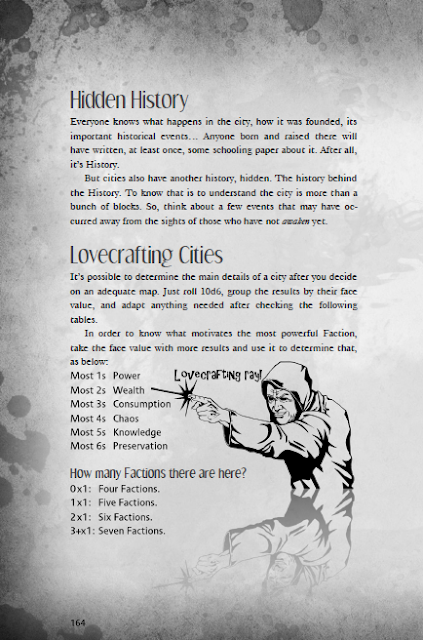And 2020 is the year of the double critical, so I'll stay optimistic!
RPG-wise, what I want to do in 2020 is publish a few books. Some are already written, some are just vague ideas at this point, and some are in the middle.
ALL are related to the stuff I write in this blog, mostly because this is the stuff that is on my mind.
Here is what I've got so far.
Dark Fantasy series
I have two more books for my Dark Fantasy series: settings and magic items.
I also wrote a book with 100 magic weapons for Dark Fantasy. I like the result. If people like it, I might make a few more (have a few ideas for armor and other magic items).
I am planning to have these three books out before the end of the third trimester.
I am planning to have these three books out before the end of the third trimester.
I'm very, very tempted to write a Dark Fantasy Cyclopedia of sorts. That would include ALL the stuff I have plus a few things from the Teratogenicon (see below). And I want to revise and update a few things from Dark Fantasy Basic. If I do this, I think I'd like to have a print version to use at my table.
This might be lots of work, so maybe I'll leave it for last.
This might be lots of work, so maybe I'll leave it for last.
UPDATE [2020]: 100 magic weapons was made available in January. Dark Fantasy Magic Items and Dark Fantasy Settings are available since February.
Teratogenicon
The Teratogenicon is written. Now I've got some revising to do. The art (by Rick Troula) is not finished yet, but it is looking GREAT so far.
I think we might get this finished before July.
I think we might get this finished before July.
I really like this project, and I want it to be huge. However, I'm not sure if everyone feels like me about monsters. In short: that they should be more varied and interesting, and that this is more important than stat blocks.
Anyway, this is happening regardless. I really hope you like it. If lots of people want it, there might be a print version.
UPDATE [2020]: Teratogenicon is here! And it's beautiful!
Fifth Edition stuff
I have been thinking a lot about 5e lately. I feel I could create an easier, faster version of 5e without losing anything significant. I think I could reduce the relevant parts of 5e to about 100-200 pages. It looks like hard work, but I have the SRD to work with. I dunno. There are a few good books on the market that do that already.
My manual of arms book didn't get much traction, reviews, comments, etc. I'm unsure about making one for armor (and stunts, options, etc.).
There is no date for that so far.
There is no date for that so far.
UPDATE [2020]: nope. See here.
Setting stuff
I have a few settings in mind, but nothing is written. Well, some ideas were added to the Teratogenicon and Dark Fantasy Settings, but a have no "setting book" yet.
I feel a bit silly about inventing names for places, races, people... I don't even USE published settings as written, I added stuff from multiple places, and my books are like that, more suggestions than hard rules, so not sure how useful it would be for other people.
Anyway, I am curious about creating a gonzo, post-apocalyptic setting from this and this. And maybe this and this. In short, my own version of Dark Sun.
There are other ideas too, maybe I'll test the waters a little before I dive in.
There is no date for that so far.
There is no date for that so far.
UPDATE [2020]: nope. See here.
Stay tuned!
Here is my idea if you want to keep track of this stuff. I'll update THIS post during the entire year, giving you links as these things come out. See how I wrote "UPDATE [2020]" under each topic? Yeah, I plan to use these blank spaces as soon as I can.
If I fail, well, feel free to call me out in the comments!
Also, I'm writing a second post about my "2020 RPG resolutions" in a couple of days, specifically to ask what would YOU like me to do.
Do you want more blogging or more publishing? Do you want OSR, 5e, or both? Lots of arts, lots os writing, or both? Print or PDF? Let me know in the next post... Or, if you can't wait, let me know right here!
























